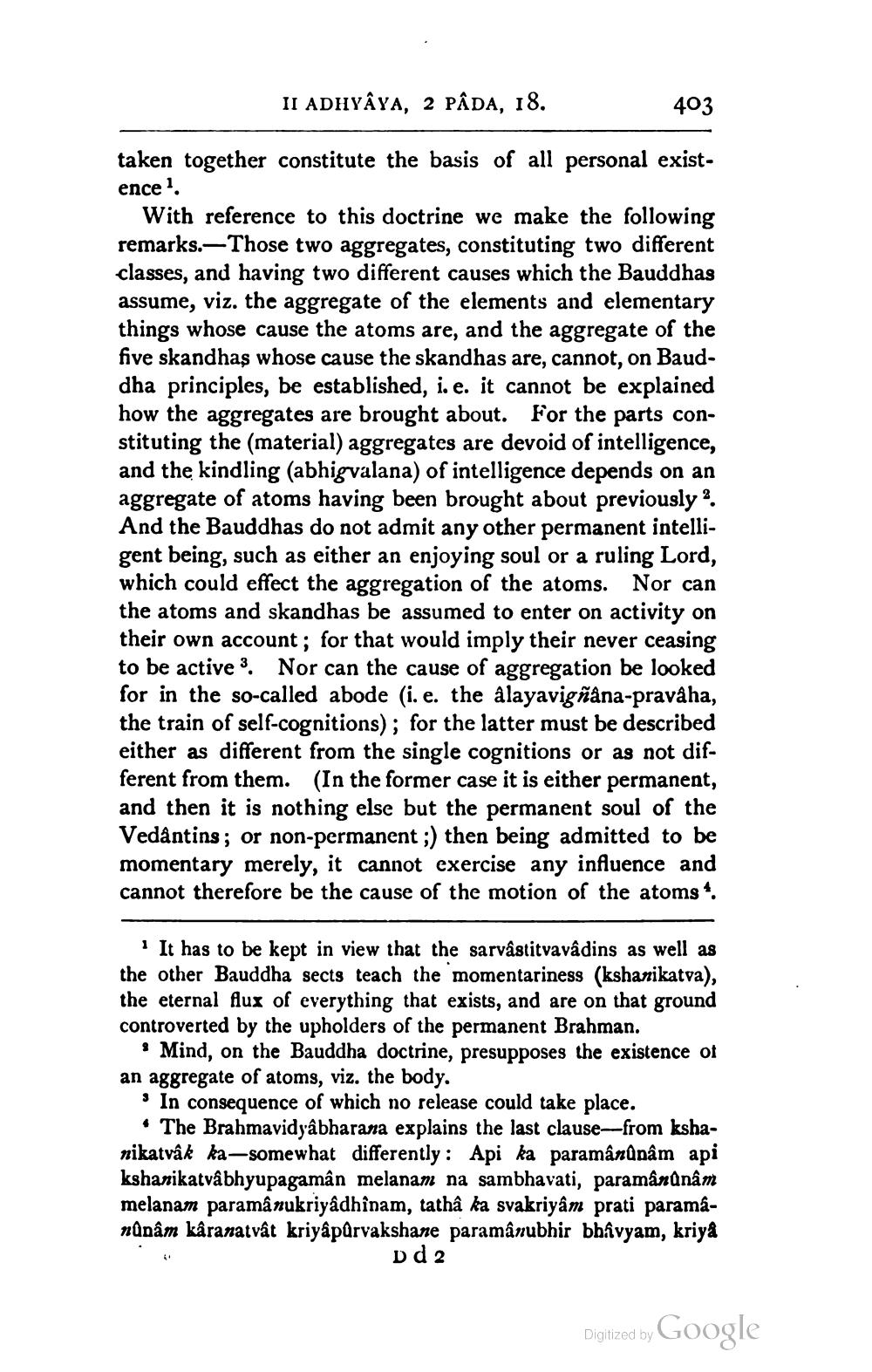________________
II ADHYAYA, 2 PÂDA, 18.
403
taken together constitute the basis of all personal existence.
With reference to this doctrine we make the following remarks.-Those two aggregates, constituting two different classes, and having two different causes which the Bauddhas assume, viz. the aggregate of the elements and elementary things whose cause the atoms are, and the aggregate of the five skandhas whose cause the skandhas are, cannot, on Bauddha principles, be established, i.e. it cannot be explained how the aggregates are brought about. For the parts constituting the (material) aggregates are devoid of intelligence, and the kindling (abhigvalana) of intelligence depends on an aggregate of atoms having been brought about previously 2. And the Bauddhas do not admit any other permanent intelligent being, such as either an enjoying soul or a ruling Lord, which could effect the aggregation of the atoms. Nor can the atoms and skandhas be assumed to enter on activity on their own account; for that would imply their never ceasing to be active 3. Nor can the cause of aggregation be looked for in the so-called abode (i. e. the alayavigñana-praváha, the train of self-cognitions); for the latter must be described either as different from the single cognitions or as not different from them. (In the former case it is either permanent, and then it is nothing else but the permanent soul of the Vedantins; or non-permanent;) then being admitted to be momentary merely, it cannot exercise any influence and cannot therefore be the cause of the motion of the atoms *.
" It has to be kept in view that the sarvâstitvavâdins as well as the other Bauddha sects teach the momentariness (kshanikatva), the eternal flux of everything that exists, and are on that ground controverted by the upholders of the permanent Brahman.
. Mind, on the Bauddha doctrine, presupposes the existence of an aggregate of atoms, viz. the body.
• In consequence of which no release could take place.
• The Brahmavidyabharana explains the last clause--from kshanikatvâk ka-somewhat differently: Api ka paramânânâm api kshanikatvábhyupagamân melanam na sambhavati, paramândnâm melanam paramânukriyâdhînam, tatha ka svakriyâm prati paramanûnâm kåranatvat kriyapūrvakshane paramânubhir bhavyam, kriya
Dd 2
Digized by Google




